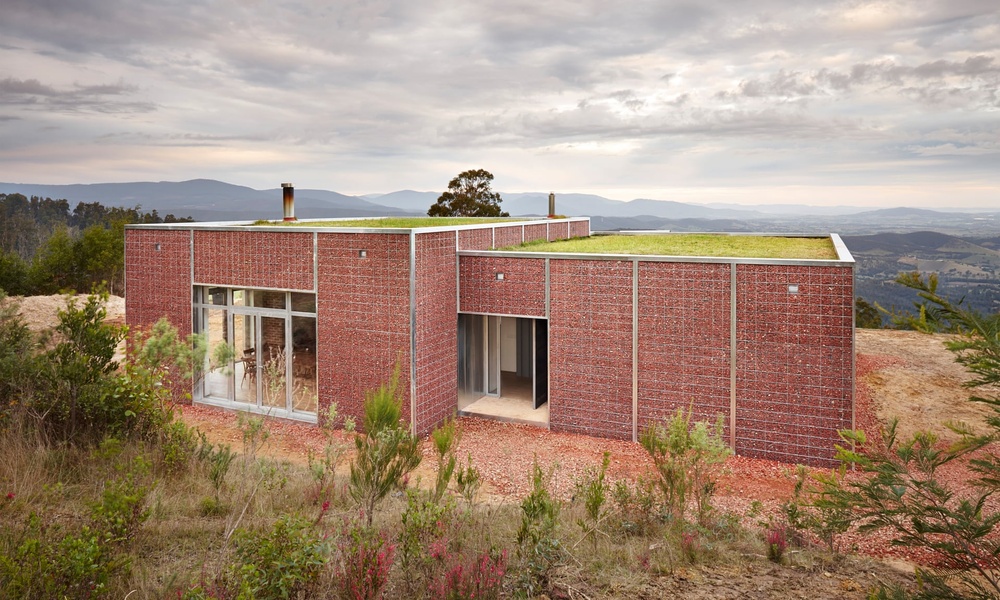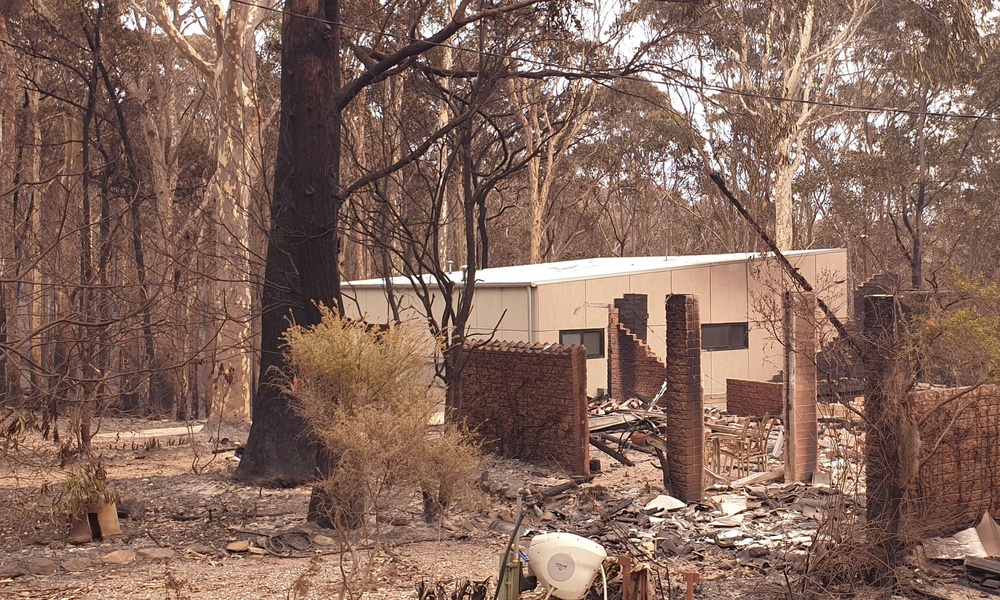Recent reports indicate that more than 2,800 homes have been destroyed in this summer’s bushfires. While there has been some relief recently, it doesn’t mean the bushfires are over. With hot and dry months predicted ahead the risk remains high.
While major bushfires have occurred in Australia throughout history, many are predicting the frequency of these disasters will increase due to global warming. There’s no telling if a crisis of this magnitude will happen again in the near future however the evidence suggests it’s becoming more likely. As a homeowner it’s time to look at options to help prevent your home from becoming a bushfire statistic.
By implementing clever house design methods you can increase your property’s fire resistance and sustainability however you can’t completely eradicate the risk. We’ve listed a few methods to consider below.
Fix gaps and cracks
Many of the homes destroyed during the bushfires were devastated due to ember attacks. An ember attack occurs when wind blows embers from a bushfire at a distance into a nearby building. The embers enter the building through gaps and cracks in its windows, door frames, roof, and walls. Once lodged in a home, the embers can start a fire in places that fire detectors may not pick up such as wall cavities.
Fixing the gaps and cracks in your home’s structure is essential to its fire resistance. When designing a new home, particularly for a bush setting, there are many ways you can achieve greater resistance. There are specialised, fire resistant window and doorframes that are a must in fire-prone areas. Non-combustible roofing and cladding are also a must. In recent times we’ve seen issues with cladding in major building burning so the standards required are now being monitored more closely. Having said that, you should do your own due diligence and check for compliance when building a new home.
Use only non-combustible and non-flammable materials
Timber homes in the bush may have their appeal however for practical reasons they should be avoided. When designing a home for fire resistance, it goes without saying that the materials you use must be non-combustible and non-flammable. Non-combustible materials will not catch fire even if you tired to deliberately burn them so they are the superior option.
By using the right materials, you may also increase your chance of survival if your home experiences a fire. Combustible and flammable materials tend to release toxic fumes when burned putting your family at risk. Examples of non-combustible and non-flammable building materials you can use are earthen or double-brick walls, steel framing, and toughened glass panes.

Joost Bakker’s bushfire-proof house in Kinglake, Victoria. Photograph: Foxtel/Rhiannon Slatter
Install a rainwater tank
Having a system for collecting rainwater not only improves your home’s sustainability, it can help safeguard your home from bushfires. You’ll also reduce your dependence on town water, which may also help your local community. The water pressure in the main pipeline can dramatically decrease when used by fire fighters. In these instances, you can use your stored rainwater and other locals can use any remaining town water pressure. You should consider a solar powered pump for bushfire emergencies since town electricity is often cut off during bushfires.
Consider electricity and solar
Even if your home is located in a town that can provide mains gas, you may choose not to use it if you have bushfire concerns. If your home is connected to the mains, the gas piping and fixtures in your home can melt or explode if a fire breaks out. The released gas can increase the fire hazard rapidly. To improve your home’s fire resistance, consider making your home all-electric and installing solar panels.
Solar panels reduce your dependence on the power grid, save money heating or cooling your home and help with environmental sustainability. They can also provide you with electricity even if the mains power is cut due to a bushfire or other emergency.
You could also install automated systems to help minimise the risk of fire damage. Automated sprinklers can turn on and off without you being home to manually take care of it are an excellent option. Automated systems can also alert you of the situation via email or SMS if you’re not at home.

Ron Weir’s bushfire-resilient home in Rosedale, on the NSW south coast, designed by architect Thomas Caddaye, is intact while neighbouring homes burned down. Photograph: Thomas Caddaye
Plan for escape
No matter how fire-resistant your home is, you can never completely eliminate the risk of it being destroyed by a bushfire. Your best chance for surviving is having your home designed in such a way that allows for an easy escape if you need too. Double story homes are great however they do increase your families’ risk of fatality in the event of a fire.
Planning your escape route will help you get out of your house and get into safety as quickly and efficiently as possible. Ensure you declutter your doorways of any flammable items to allow for as easy exit. It may sound obvious however it’s worth discussing with your family so everyone knows what to do in case of emergency.
Unfortunately the reality is as a nation we’re going to experience more bushfires of this magnitude in the future. The best we can do for now is to design our homes to be environmentally friendly, sustainable, and fire-resistant.